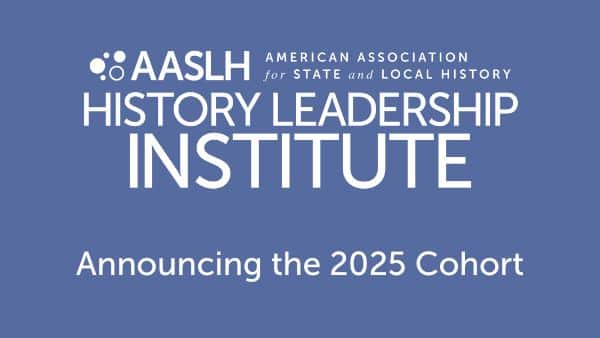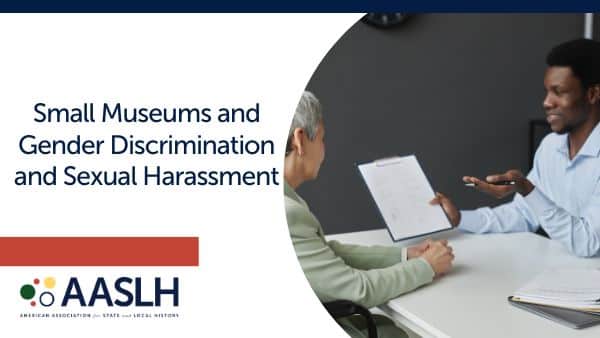By Crystal Wimer, Executive Director, Harrison County WV Historical Society

I want to begin this blog by thanking AASLH for awarding me a New Professional scholarship, so that I could attend their Exhibit Makeovers workshop in Charlotte, North Carolina in March. No matter the size of our institution, my fellow museum professionals and I have a mutual responsibility to help our museums and historical societies share our unique history and protect our cultural materials. Also, we all are aware that it is necessary to take advantage of training such as this to make our museums the best possible institutions despite our differing financial and capacity challenges.
If your small museum is in any way like mine, your exhibit’s “makeover” is long overdue. The reasons why are numerous. But the good news is that you are not alone, and help is out there.
AASLH’s Exhibit Makeovers workshop is a must if your museum is ready to shake things up. For two days at the Charlotte Museum of History, Alice Parman and Ann Craig, two of the authors of Exhibit Makeovers: A Do-It-Yourself Workbook for Small Museums, led us through a series of hands-on exercises that involved us forming teams and flexing our creative muscles to develop an exhibit theme, design, and text using artifacts from our host museum.

Artifacts from the Charlotte Museum of History’s collection that our teams used for a hypothetical exhibit’s story, design, and text.
Each team developed an entirely unique exhibit concept that had ambitious goals and designs because we had no hypothetical budget. We also were given a guided tour of the Hezekiah Alexander Homesite, evaluated the museum’s exhibits, and provided feedback to the staff. To cap off an already awesome workshop, we were given an opportunity to brainstorm with our temporary exhibit team for the makeover of our home institution.
Throughout the workshop, one theme kept coming up: exhibits should have “take-home messages.” So, in the spirit of sharing, here are some of my “take-home messages” from the workshop. First tip: the goal of your exhibit is for your visitors to fall in love with its story. The exhibit’s story and text should represent multiple perspectives as well as inspire curiosity in your visitors. Secondly, don’t be afraid to borrow exhibit ideas. If you see something done well at another museum, it is okay to adapt those concepts or design to fit your museum’s mission and capacity. I purposely visited Charlotte’s Levine Museum of the New South the day after the workshop to photograph several exhibit text and design ideas that I believed we could re-work for the future Clarksburg History Museum.
Ideally, we all want to incorporate technology in our exhibits. But using the appropriate amount of technology is key, and you don’t have to use the latest thing. Most of the time, the proven and reliable technology is the best route to take with your exhibits. Sometimes it is not about the complexity but simplicity, like changing out the artifacts. You can still have a transformation without the stress and expense of revamping the whole museum. Lastly, build yourself a good team of people to help you. Never do an exhibit makeover alone. Exhibit changes are a huge endeavor involving lots of talented people, so use that talent to the fullest.

Examples of exhibit body text from our writing exercise.
To say I was energized after this workshop is an understatement. It was refreshing to get out of my office to problem solve with other museum professionals who are experiencing the same challenges. I am excited, rather than anxious, about the new exhibits for the Clarksburg History Museum and the Stealey-Goff-Vance House. Furthermore, I cannot wait to share these exhibit makeover strategies with my fellow professionals in West Virginia.
Like other small museums in rural areas, the majority of us are volunteer-managed or maybe have one paid staff person, and there is not much of a budget for attending workshops or conferences out of state. That is why organizations such as the West Virginia Association of Museums (WVAM) is so vital to professionals and volunteers working in my state. As a recently elected board member-at-large for WVAM, it is my goal to expand our workshop opportunities, and I say with certainty that exhibit makeovers will join our workshop schedule in the coming year. When we share knowledge, our museums become stronger no matter their size.
Check out our full calendar of onsite workshops, webinars, and online courses here.



